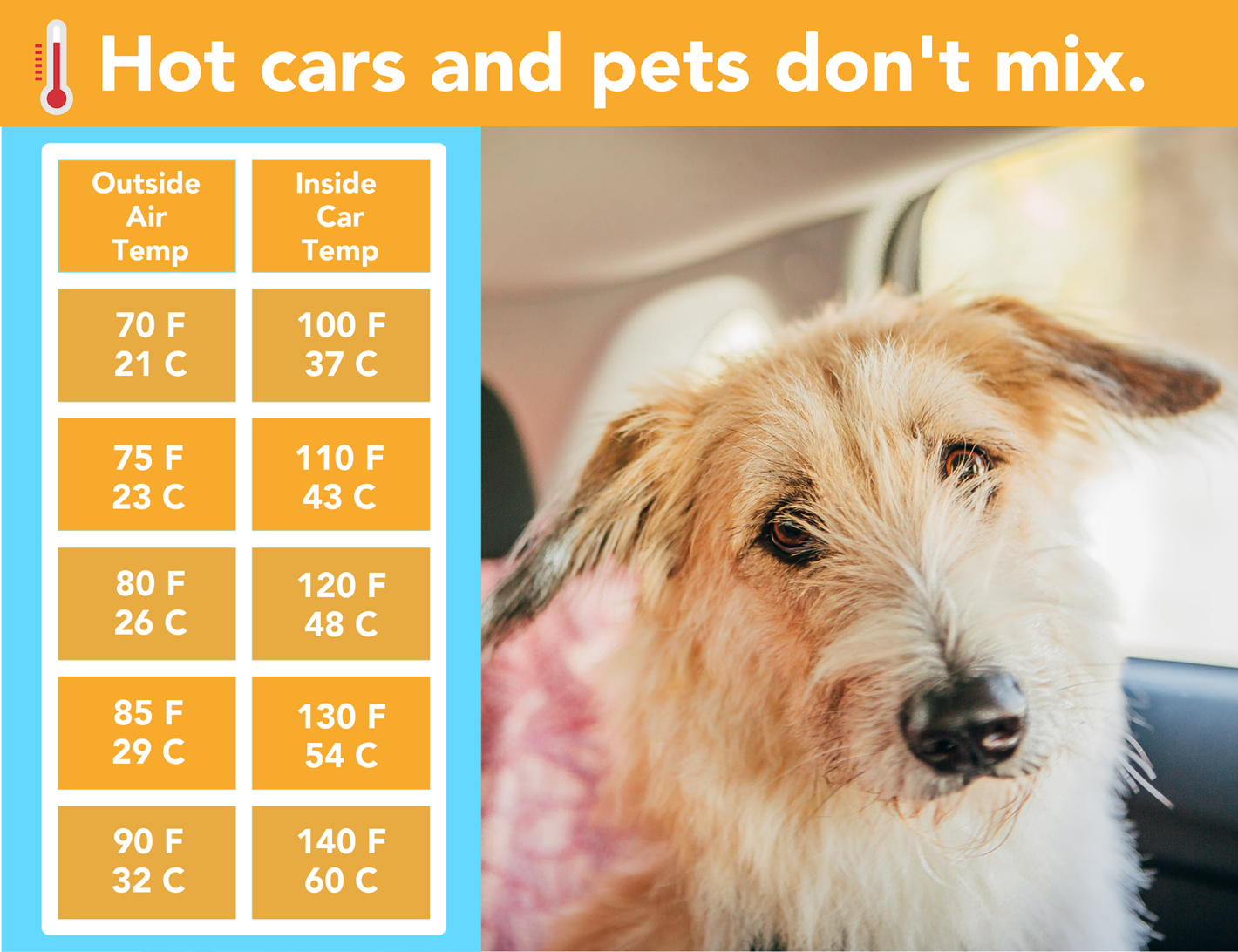|
|
May flowers are about to bloom and so are warmer temperatures. Emergency veterinarians often see the majority of heat stroke cases in mid to late May, on days when the temperature goes up rapidly (i,e, when pet owners are not prepared for the sudden increase in temperature).
Heat stroke, or hyperthermia, is the inability of an animal to regulate its body temperature, causing it to become too high. When an animal's body temperature increases, proteins in the body start denaturing or becoming destroyed. This can lead to a massive inflammatory cascade and blood clotting disorder.
|
| Signs of heat stroke can include: |
- Rapid, non-stoppable breathing or panting
- rapid heart rate
- acute lethargy or a non-responsive animal
- seizures and other neurologic signs
- pale gums
- bloody diarrhea
|

|
 |
Did you know?
Brachycephalic breeds - breeds that have flatter faces and smaller noses - are most susceptible to heat stroke because of their anatomy. Their shorter noses, narrow or small nostrils, and elongated soft palate in their mouth prevent them from efficiently ventilating or panting in order to rid the body of excess heat. Panting is the primary mechanism for dogs to cool their body temperature.
|
|
When the day is predicted to be warm or hot, it is best to walk dogs early in the morning or late at night when the ambient temperature is below 70 degrees Fahrenheit. This is especially important for brachycephalic breeds.
It is best not to take dogs for prolonged outing or walk in the afternoon when the ambient temperature is expected to rise.
|
 |
 |
Cats & Heat
Cats are known as heat lovers, but they can suffer from hyperthermia, too. For indoor cats, be careful not to confine them to a high-temperature room, such as a sunroom or garage. Outdoor cats should have fresh, clean water and access to cool, shady spots. If possible, bringing outdoor cats indoors during the hottest parts of the day is also advised.
|
| Take immediate action if you suspect your pet may be suffering from heat stroke. If you are able, check your pet's temperature. Normal body temperature for cats or dogs is 101-102.5 degrees Fahrenheit. A rectal temperature above 105 degrees Fahrenheit (40.5 Celsius) constitutes an emergency for both dogs and cats. Try to cool your pet's body by placing cool wet towels over the back of the neck, in the armpits, and in the groin area. Wet the ear flaps and feet with cool water and head to the closest open veterinary facility as soon as you possibly can. This is important even if your pet's symptoms seem to improve as heat stroke affects nearly every body system and can cause long-term damage. A bag of frozen peas placed between the legs will help with cooling during the trip. |

| Every summer we hear tragic stories of pets left unattended in hot cars and dying of heat stroke. Temperatures in cars can rise to life-threatening in just a few short minutes, even on mild days with cracked-open windows in the shade, play it safe and leave your pet in the cool comfort of home when you're out and about this summer. |
| Click here for additional information on heat stroke in pets. |
 |
|
Stay cool and call us at (530) 753-7580 if you have any questions or would like to make an appointment. Cheers to a healthy summer!
Your friends at Acorn Veterinary Clinic
|
|




